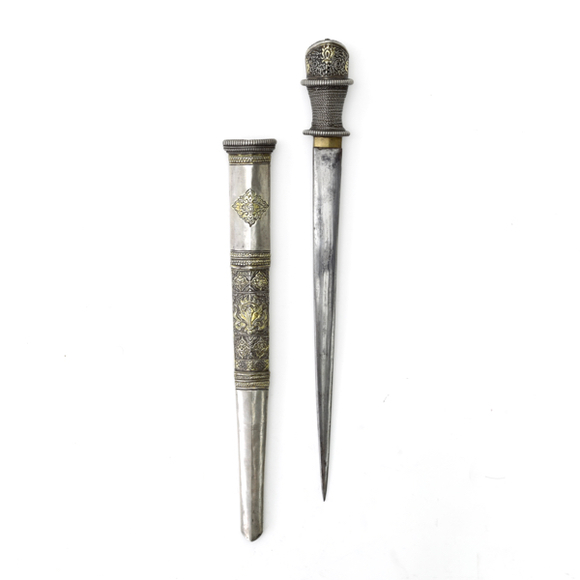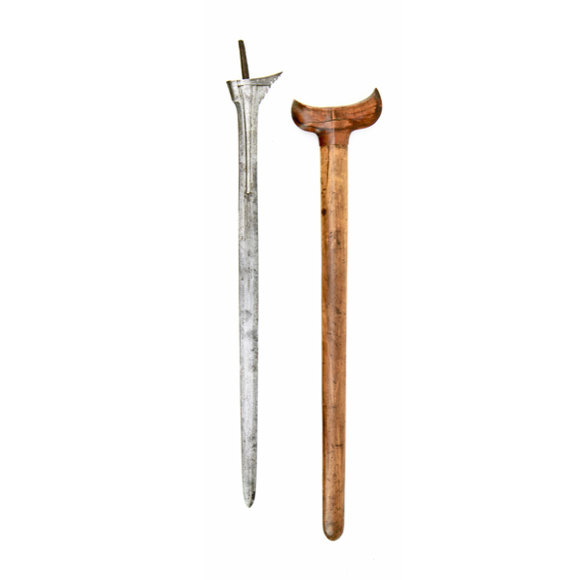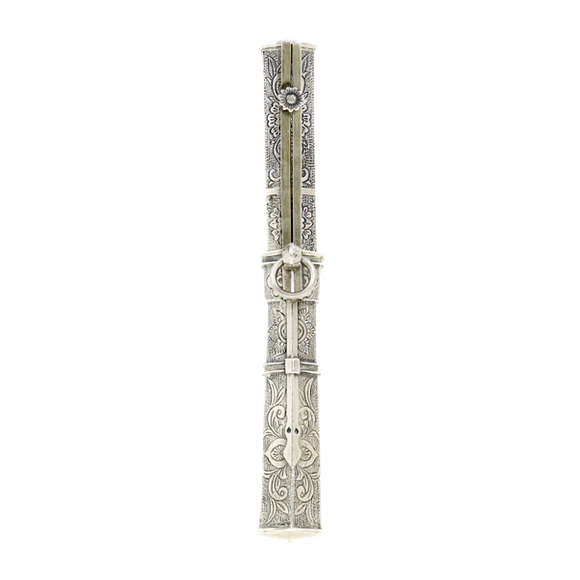The Yagami school were excellent carvers of iron, known for their 1000 monkey designs.
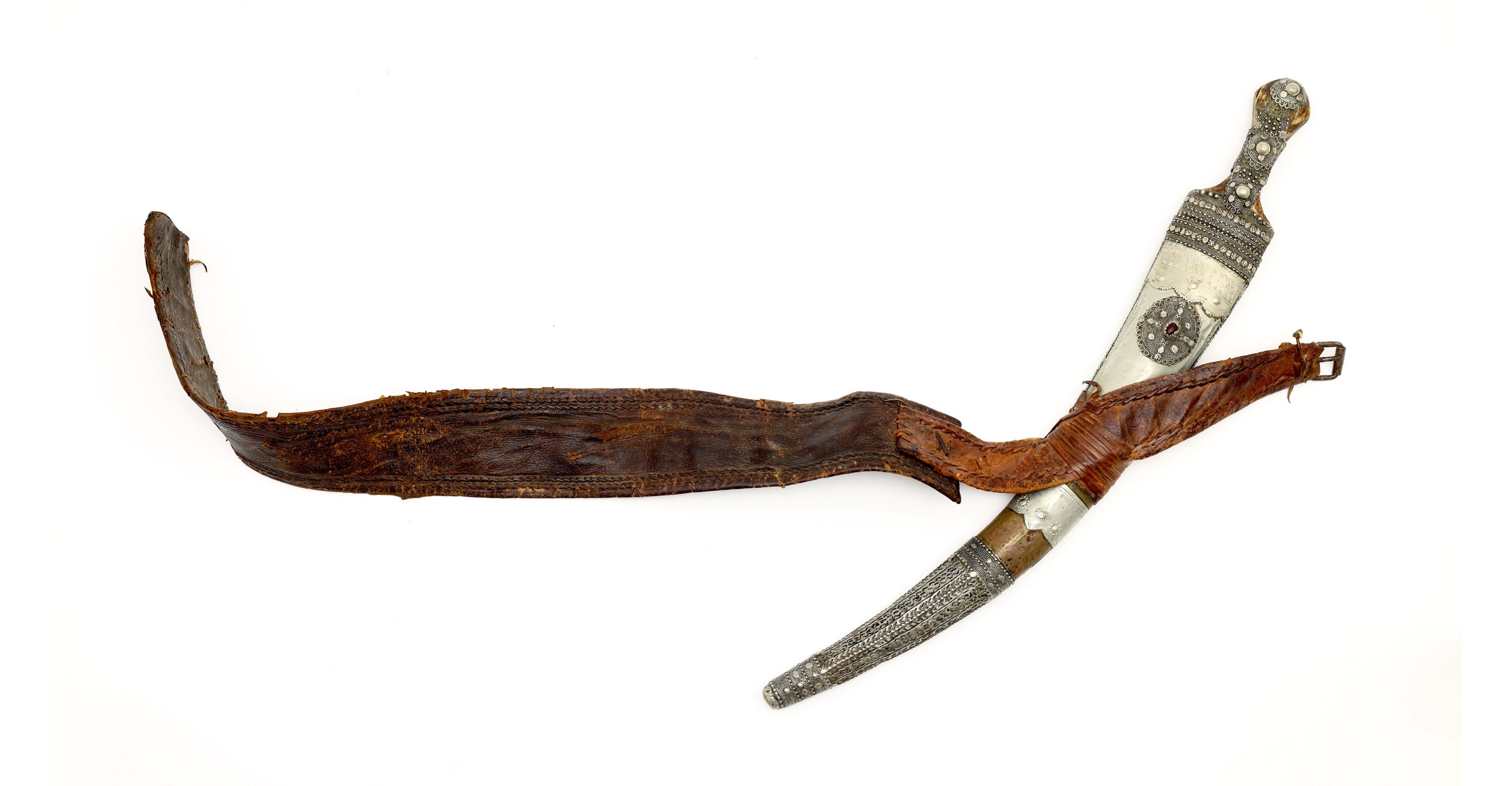
Sheathed 53.5 cm
Sword 53.2 cm
41.4 cm
Base 3 mm
Middle 3 mm
5 cm from tip 2 mm
Base 56 mm
Middle 39.5 mm
5 cm from tip 19 mm
364 grams
82 mm from hilt
Iron, steel, wood, silver, copper, leather.
A red glass or stone.
Asir and Jizan and Hejaz regions
Western coast of the Arabian Peninsula
Introduction
Sabiki is the Yemeni term for a large sword-like variety of the jambiya, the Arab dagger. They are also known as Wahhabite jambiya named after the Wahhabi fundamentalists who were known to wear them. The sabiki is mostly associated with the Asir and Jizan region in the southwest of the Arabian peninsula but was in wider circulation.1
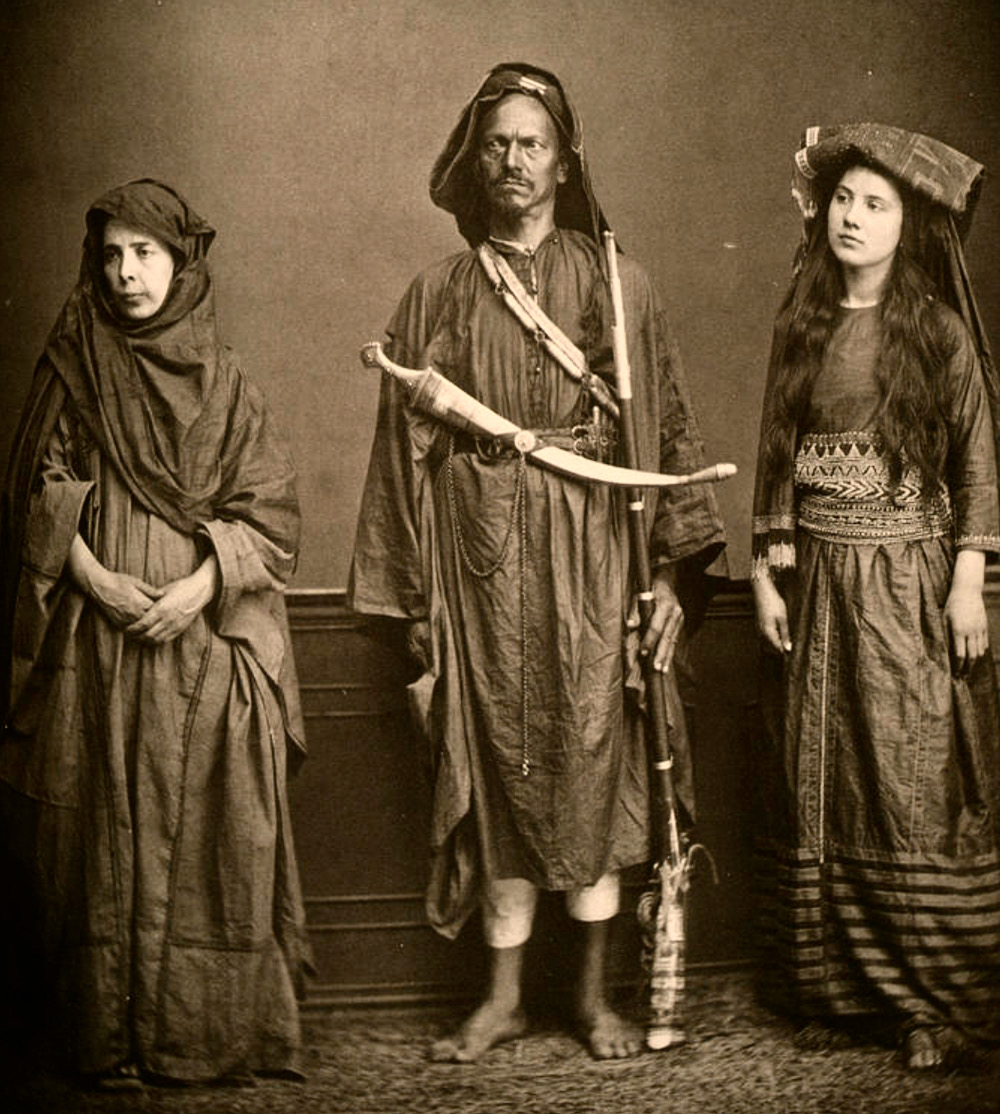
People from Hejaz, the "Western Province" of Saudi Arabia.
The man is carrying his large sabiki in front of him.
From: Les costumes populaires de la Turquie en 1873
published by the Imperial Ottoman Commission for the
"Exposition Universelle" of Vienna in 1873.
Photo by Pascal Sebah.
Notes to introduction
1. Stephen Gracie; Jambiya, daggers from the ancient Souqs of Yemen. Stephen Gracie Pty. Ltd. 2017.
This example
A classic tribal example. The wide and flat blade, a type called beyd, with slightly convex surfaces on either side for strength.1 One side is entirely smooth, the other has what seems to be a forging line running down its center. It is still very sharp.
The hilt has a full tang construction with brass plates on either side of the iron tang, and the grip built up with wood. It is adorned with silver fittings and twisted and braided silver wire.
The wooden scabbard is reinforced with copper and iron plates, most of the front is clad in silver. Here we see a mix of silver wire decoration, engraving, and punched work. In the center of the silver plate covering the top of the scabbard is a bezel with a deep red piece of glass or stone.
The sabiki retains most of its original leather belt.
Notes
1. Stephen Gracie; Jambiya, daggers from the ancient Souqs of Yemen. Stephen Gracie Pty. Ltd. 2017. Page 163.


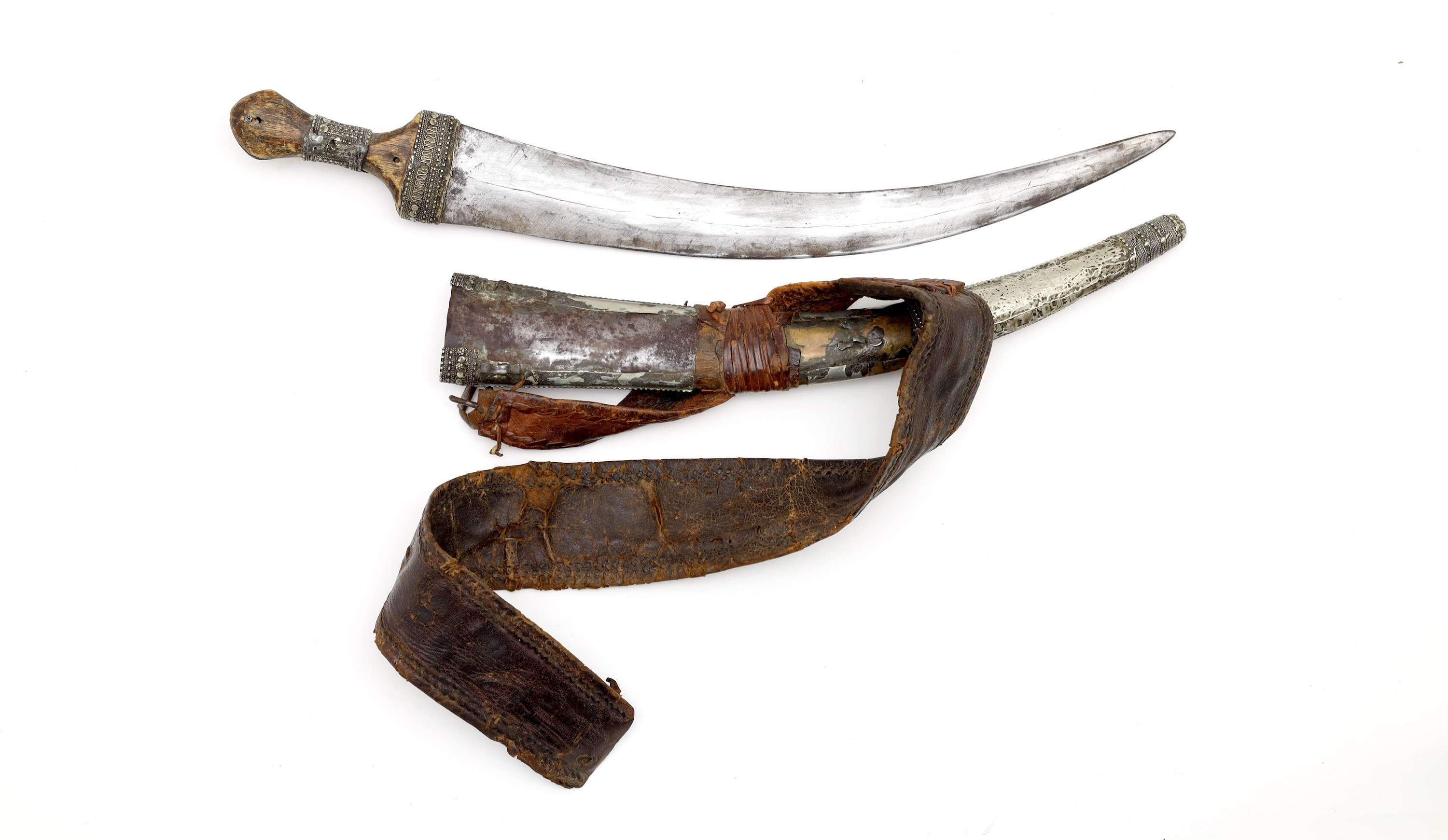



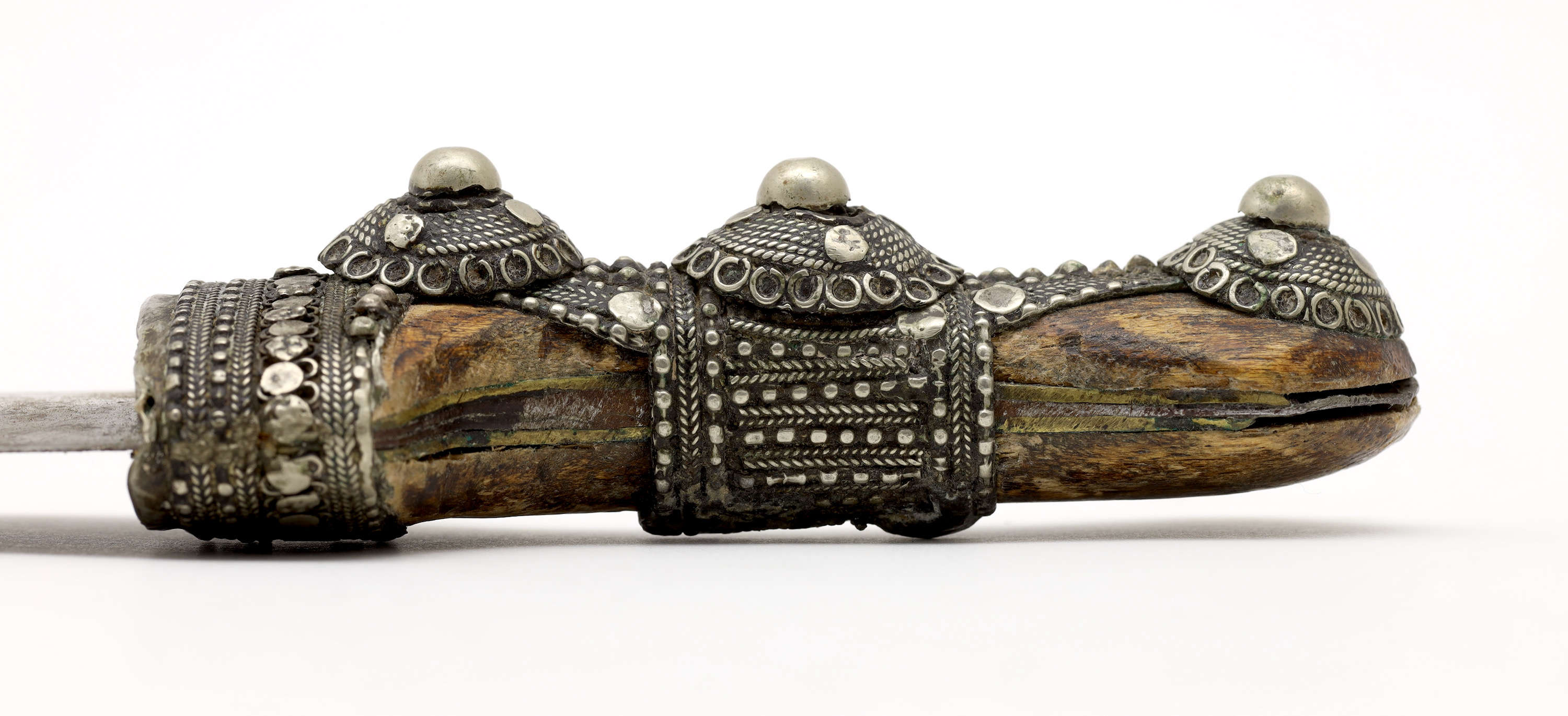

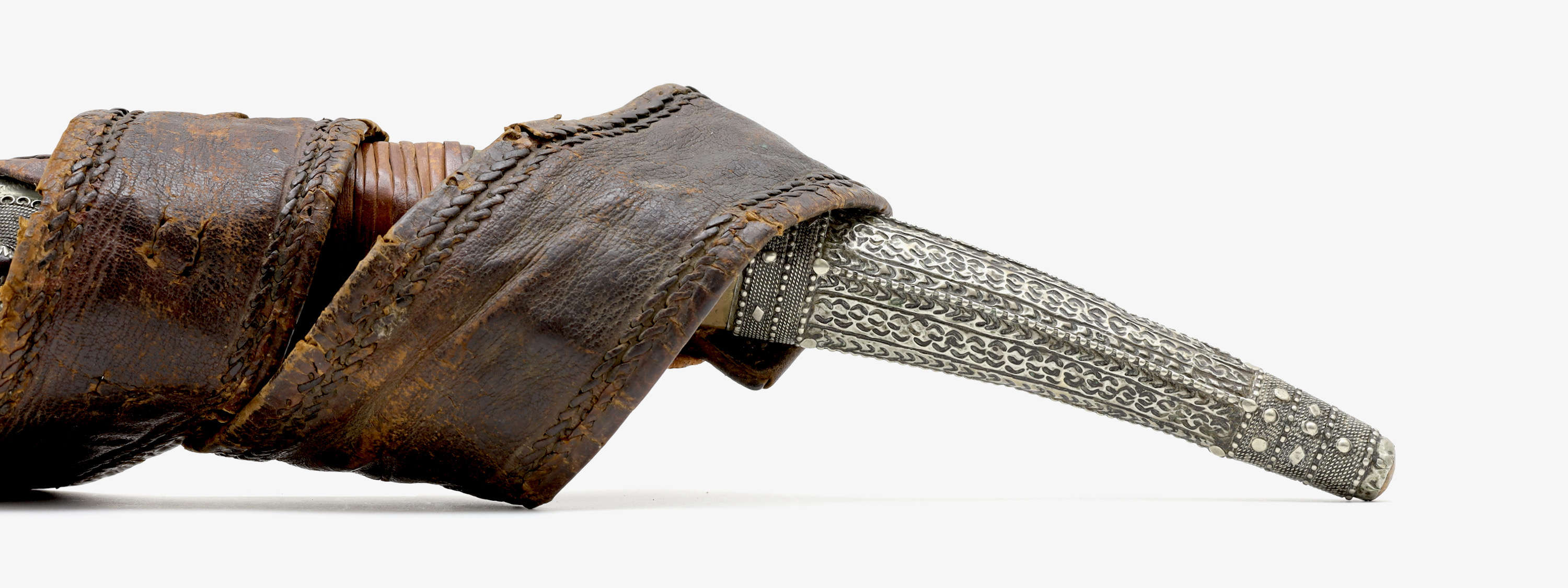
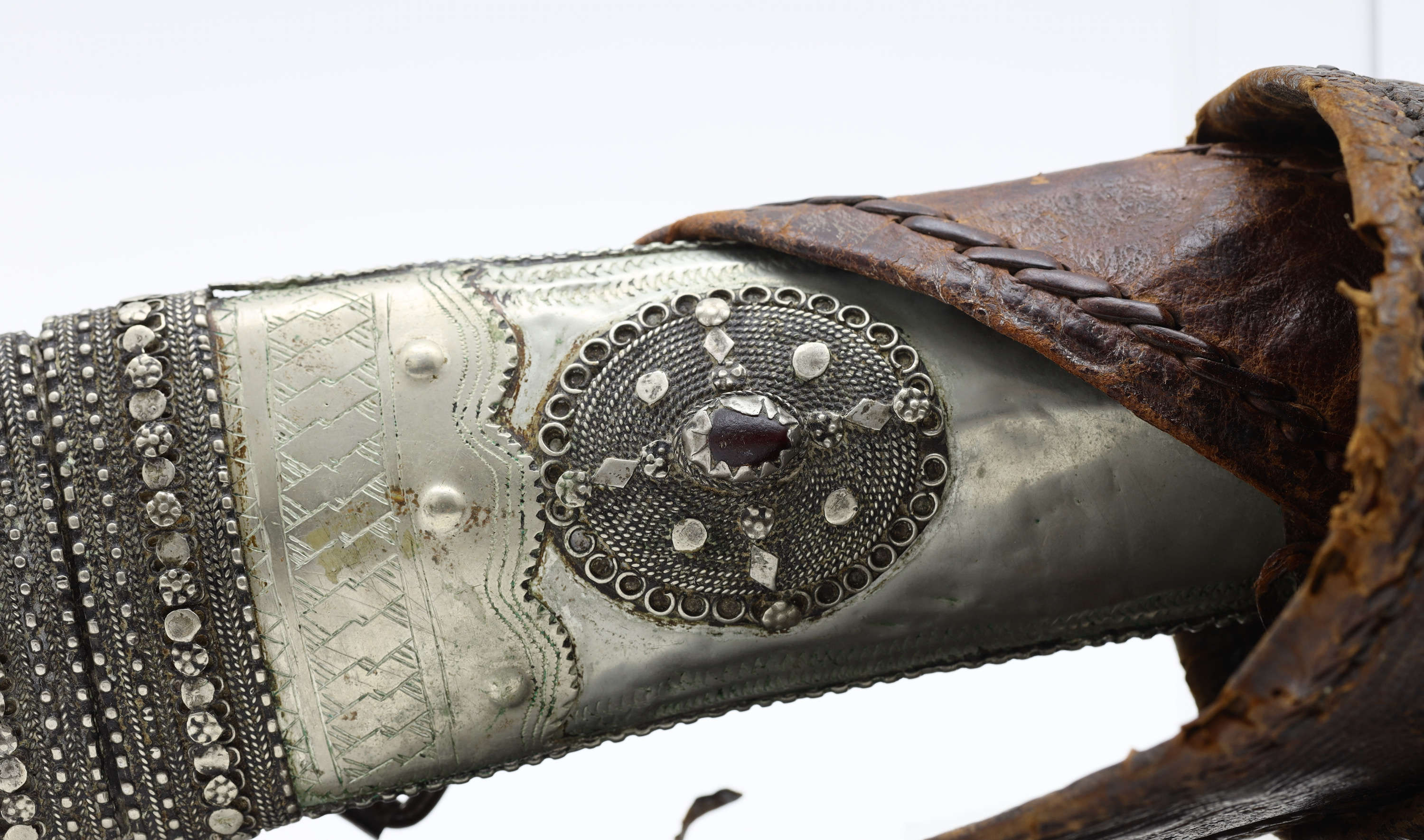
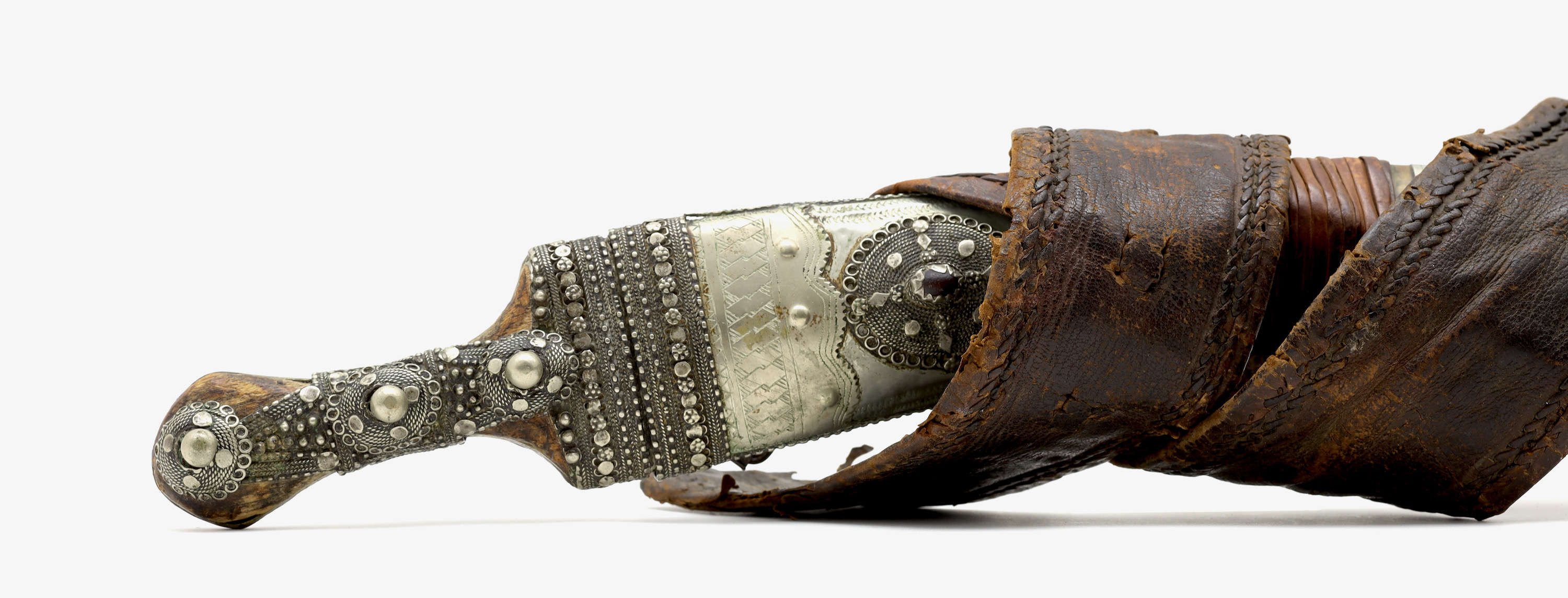

A small pointy Bhutanese dagger in a silver scabbard of a style associated with the ruling house.
Fine work and one of the very few enamelled tsuba by this maker.


